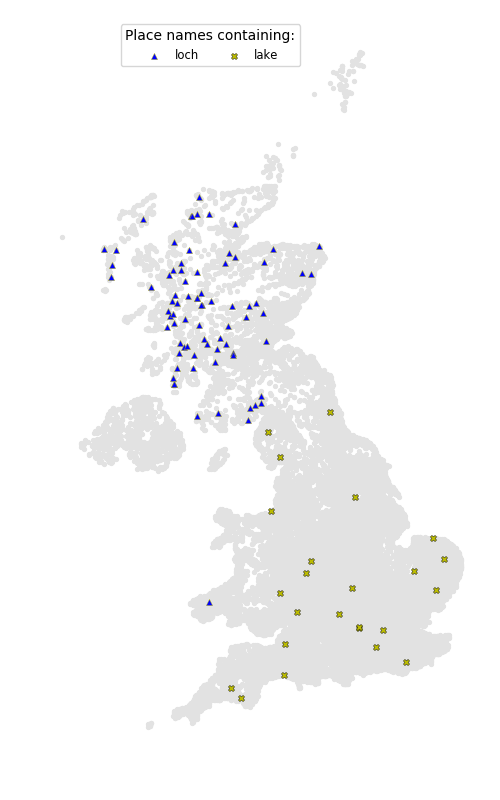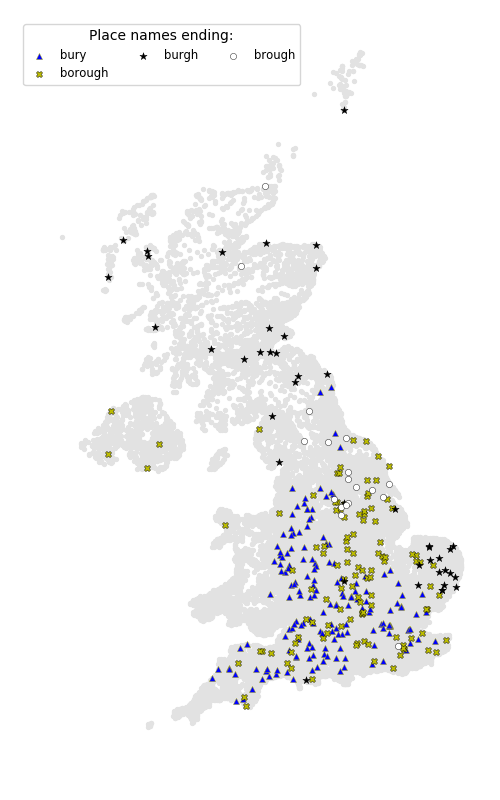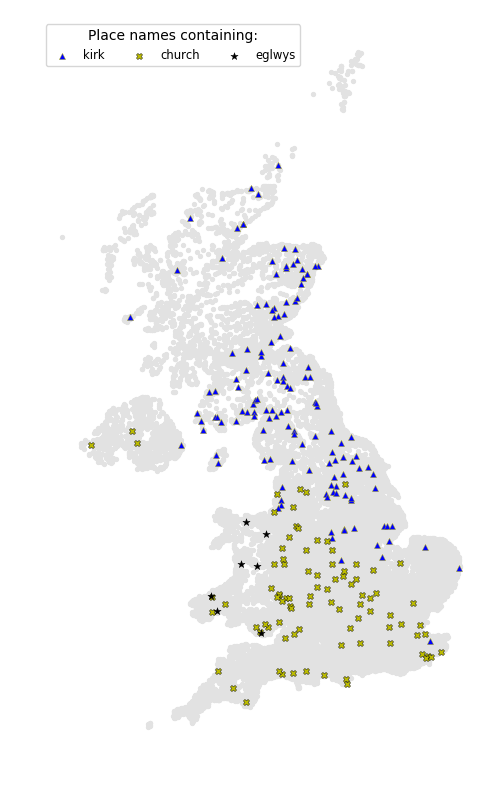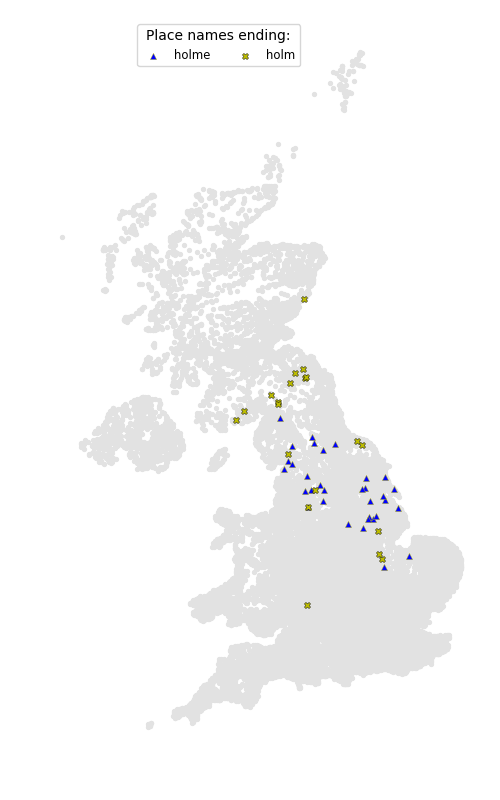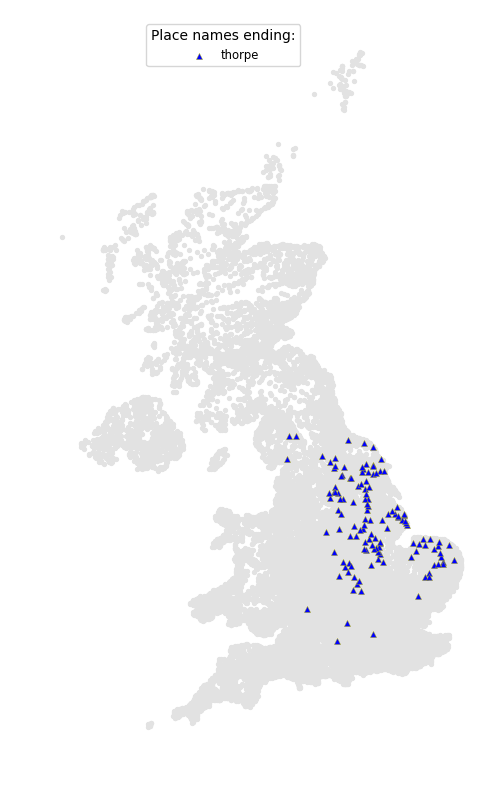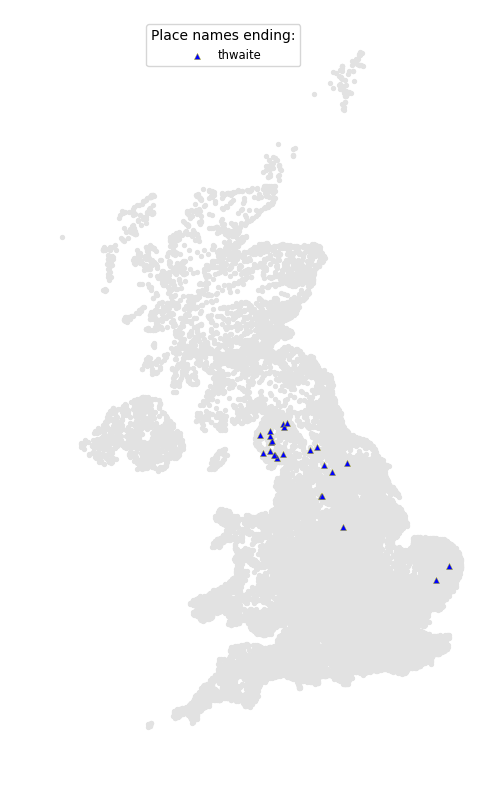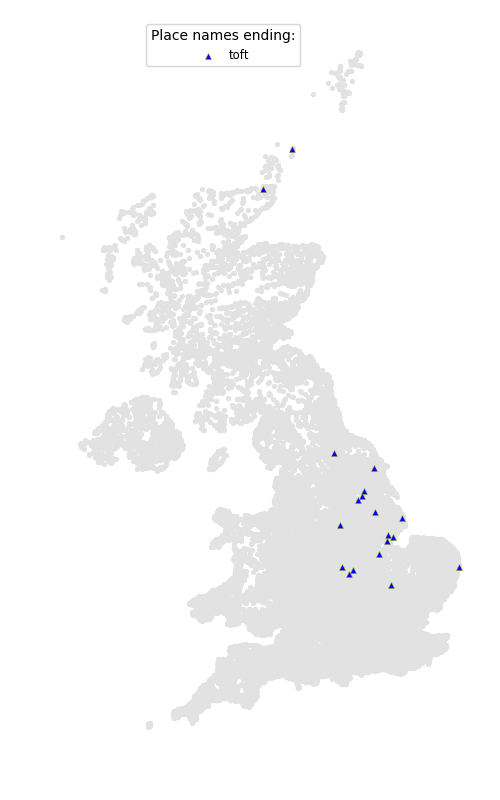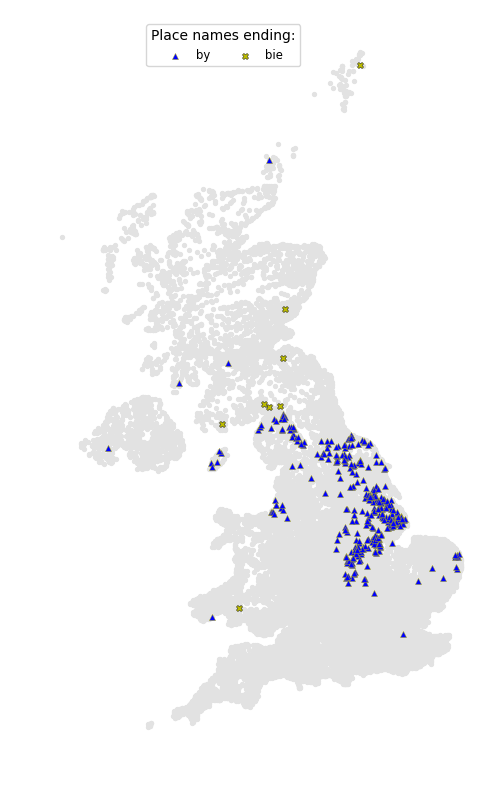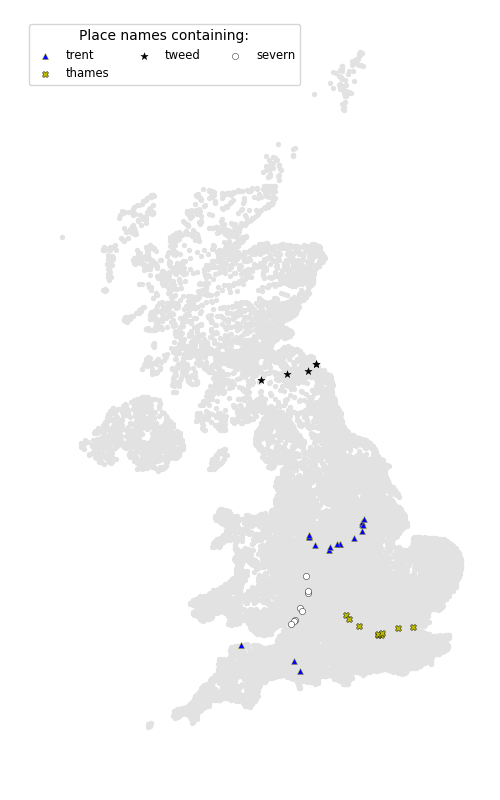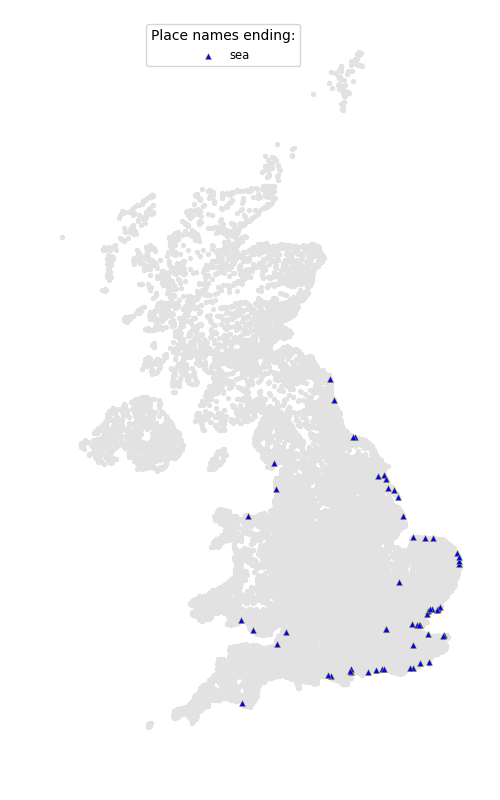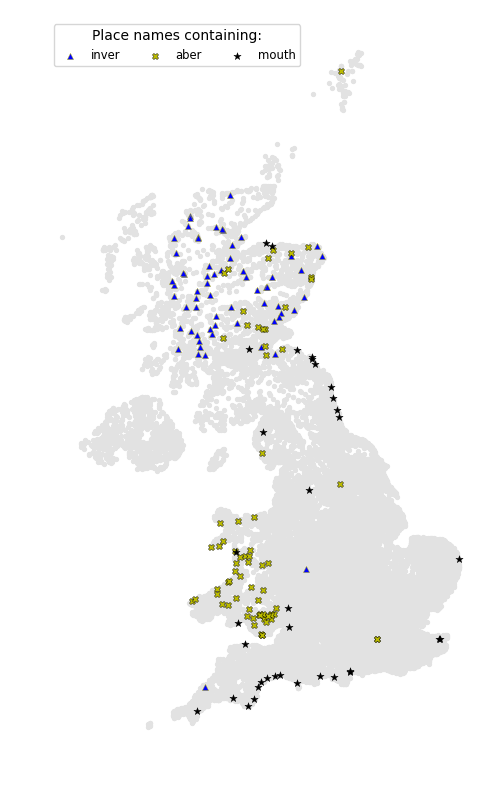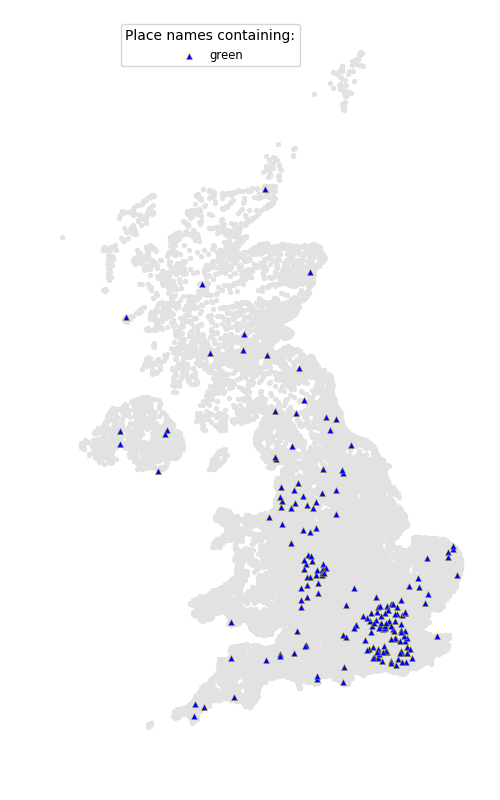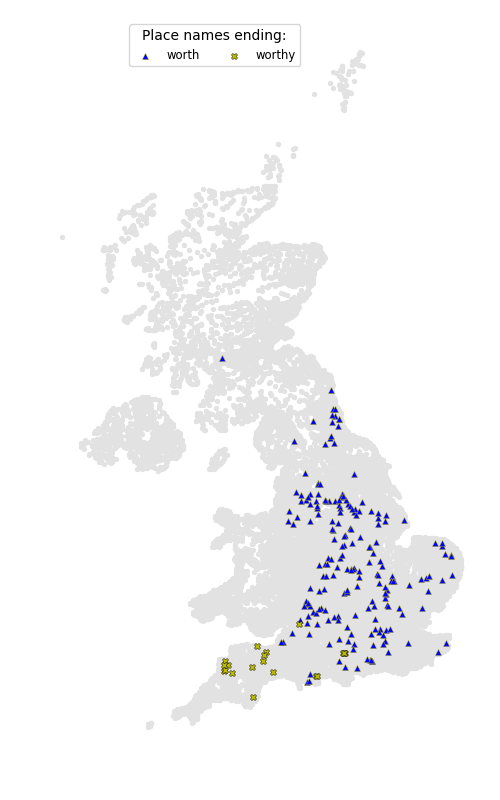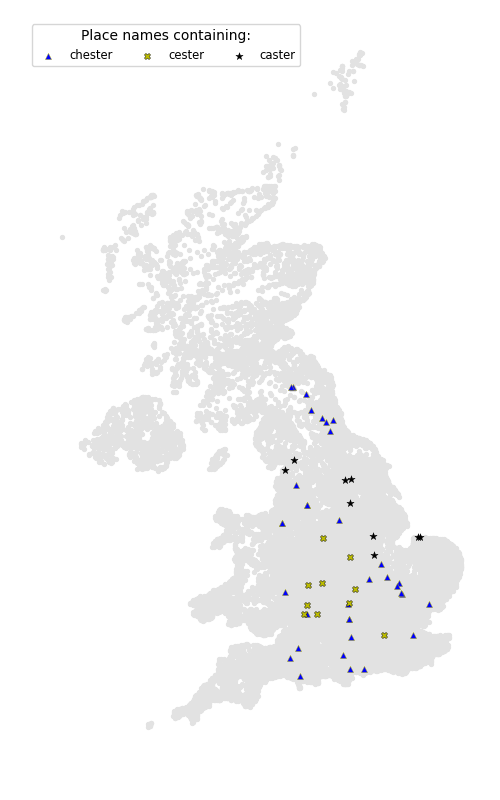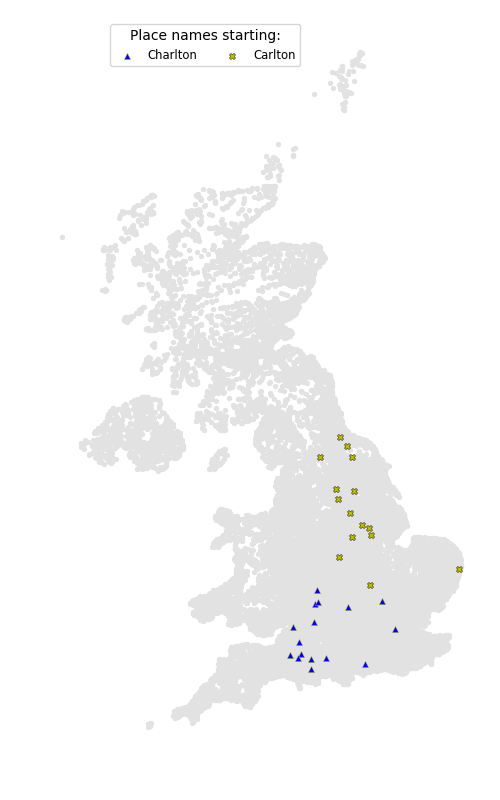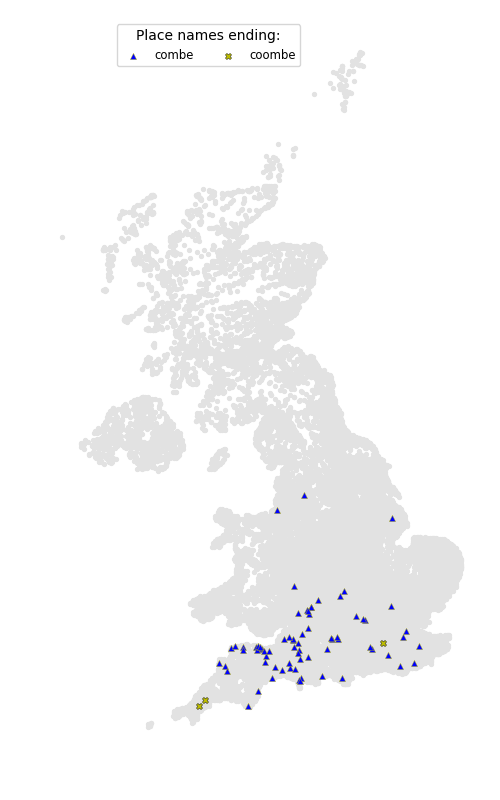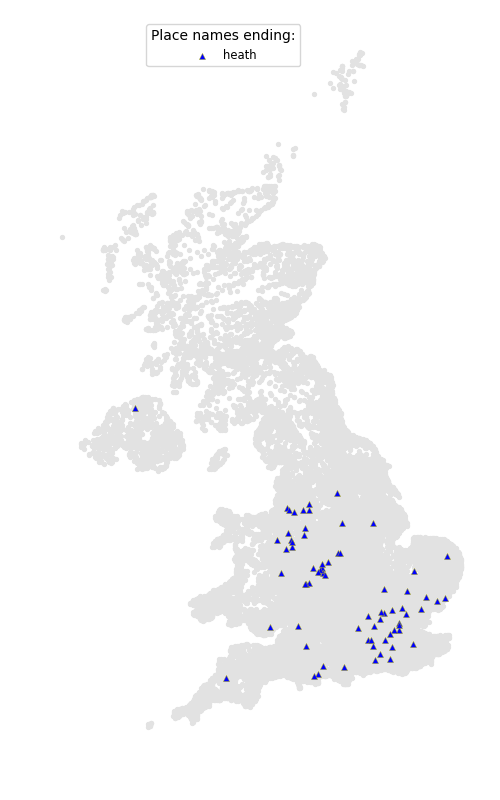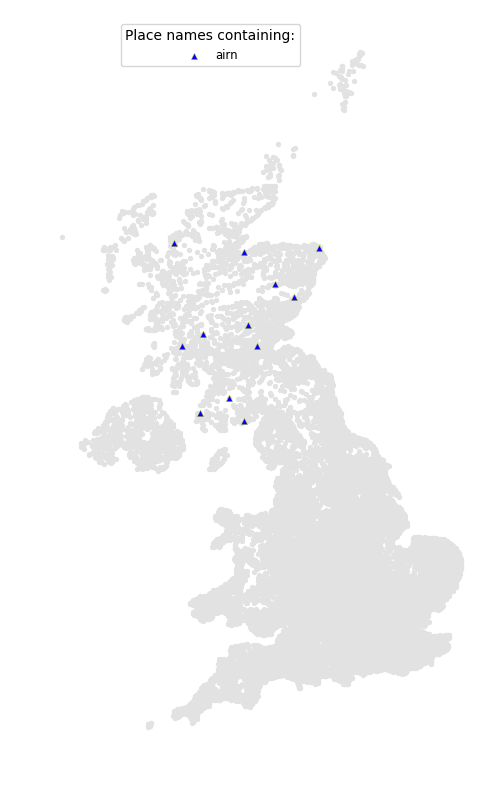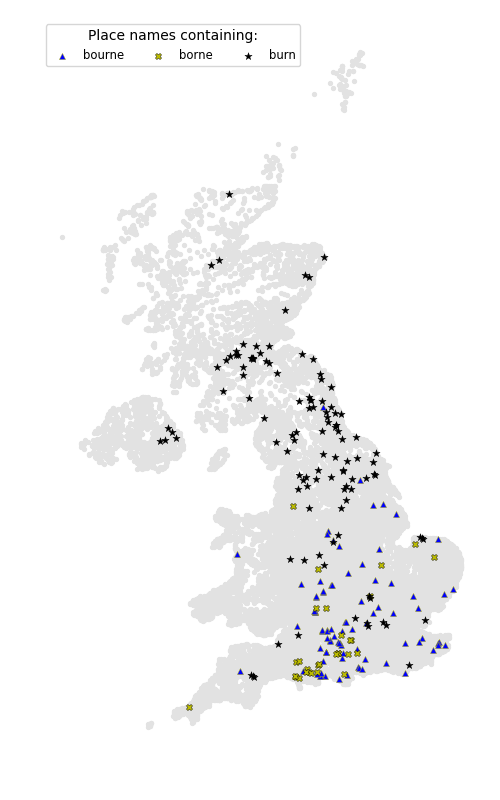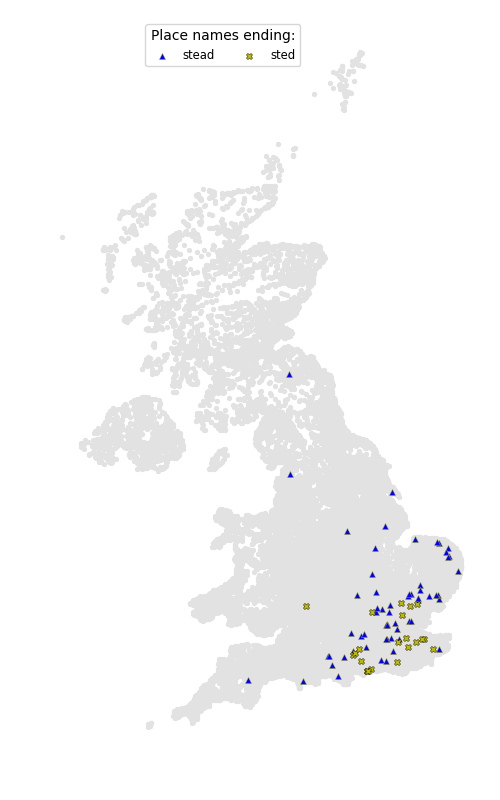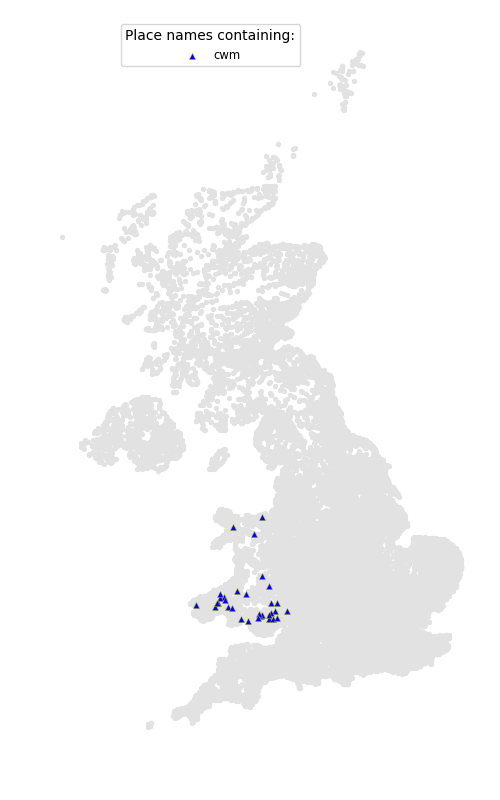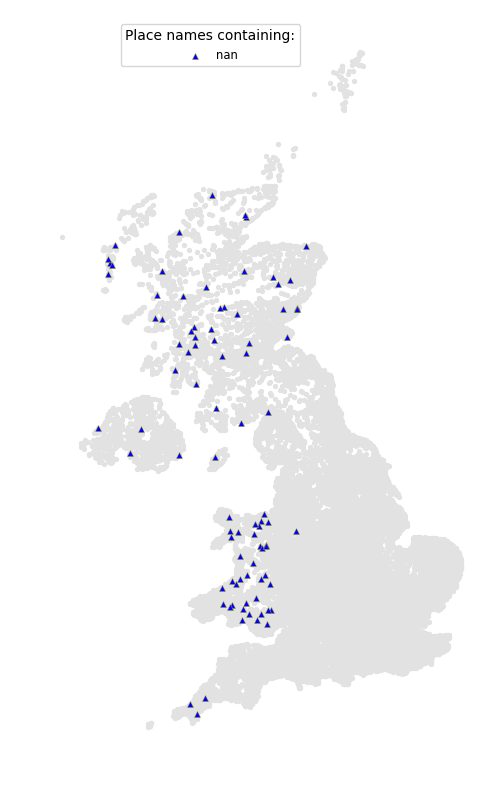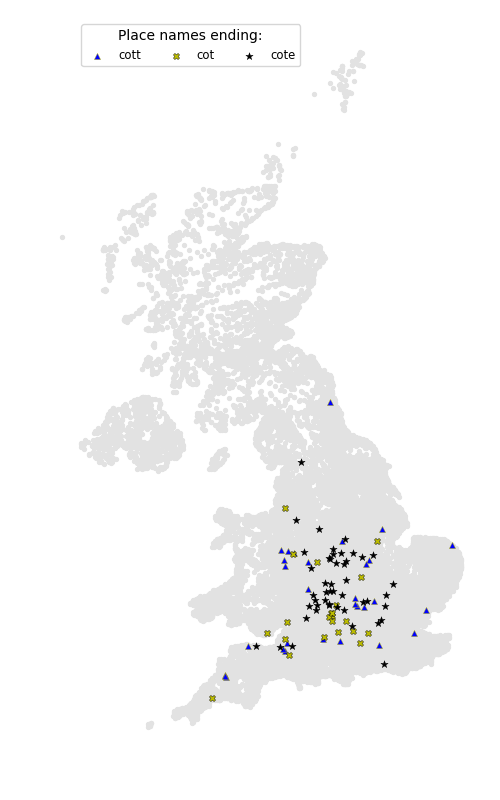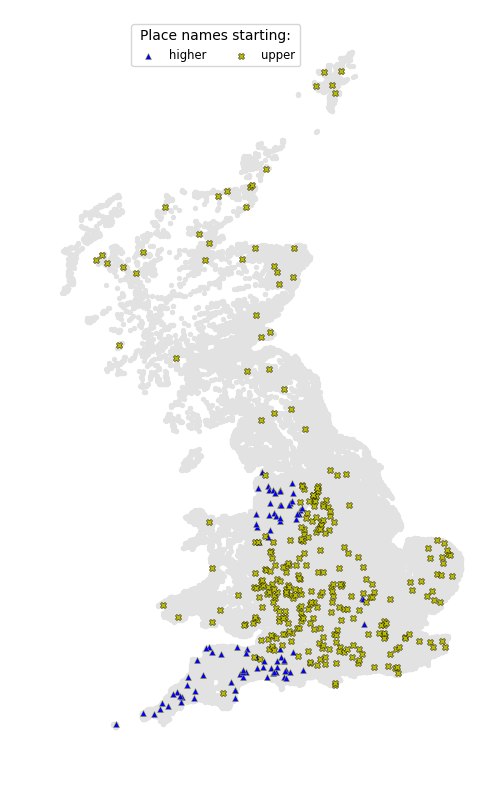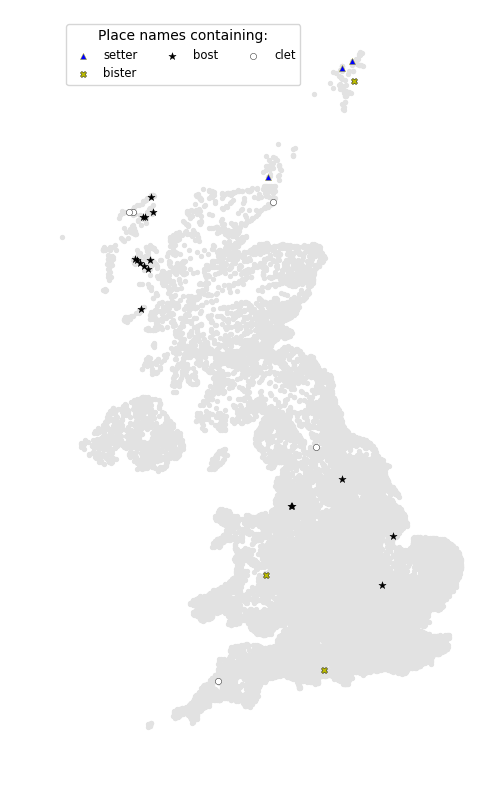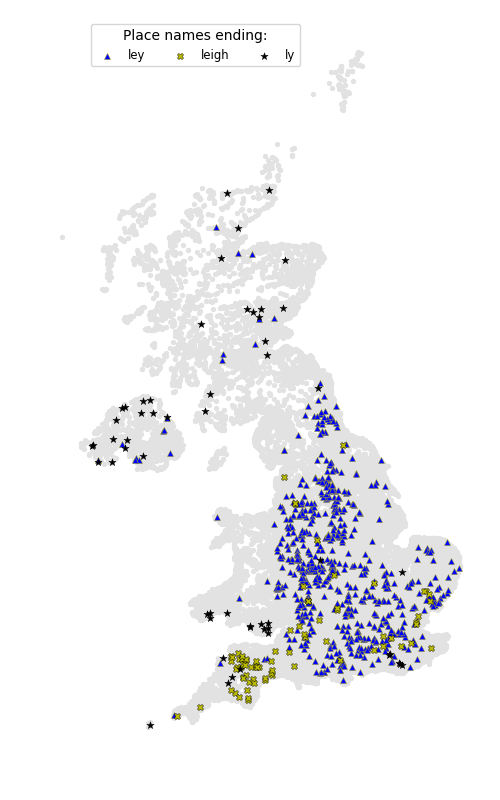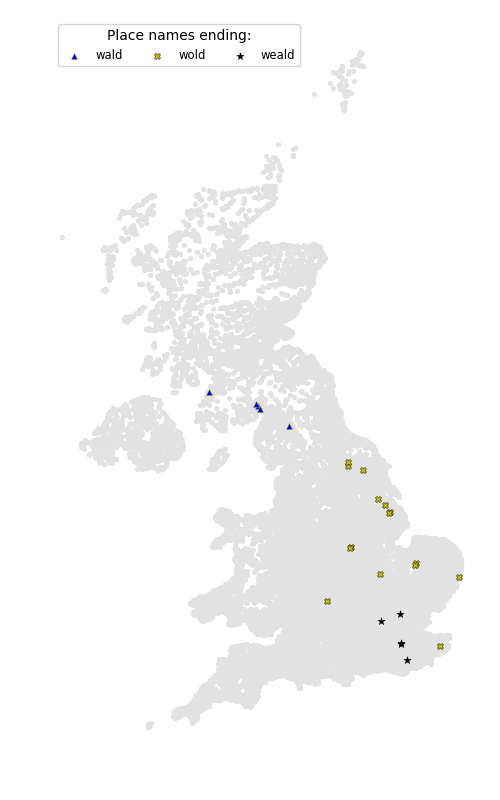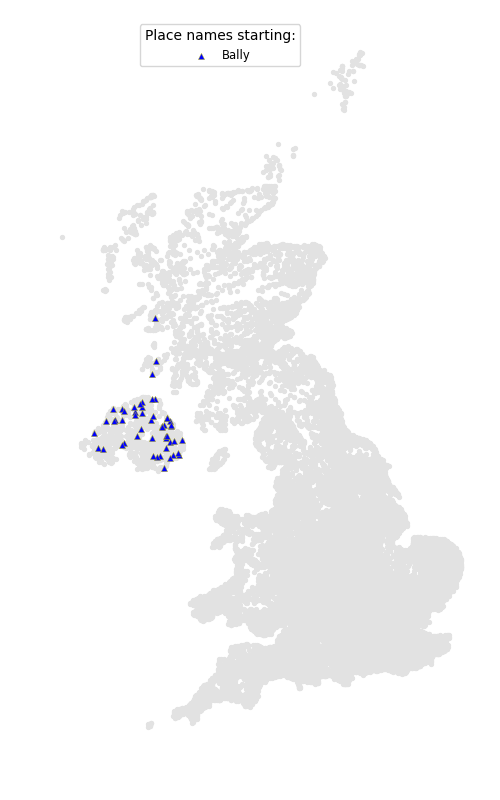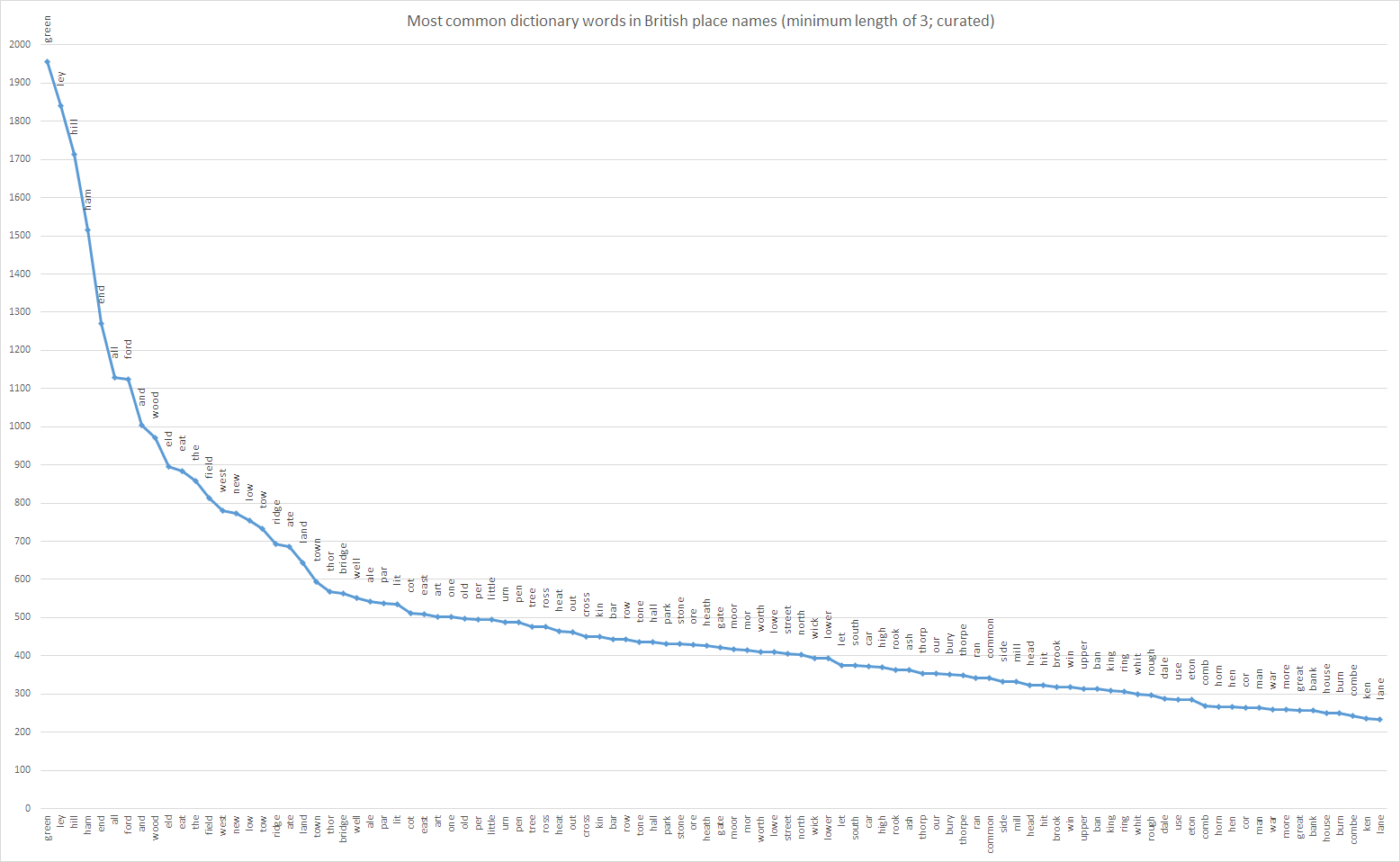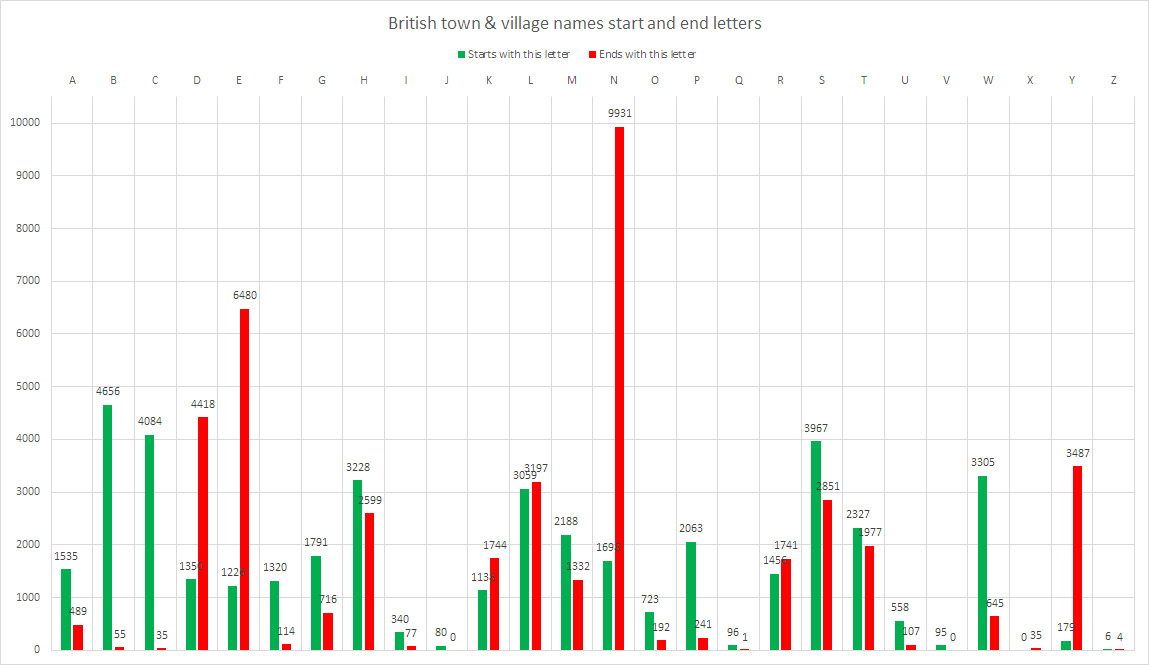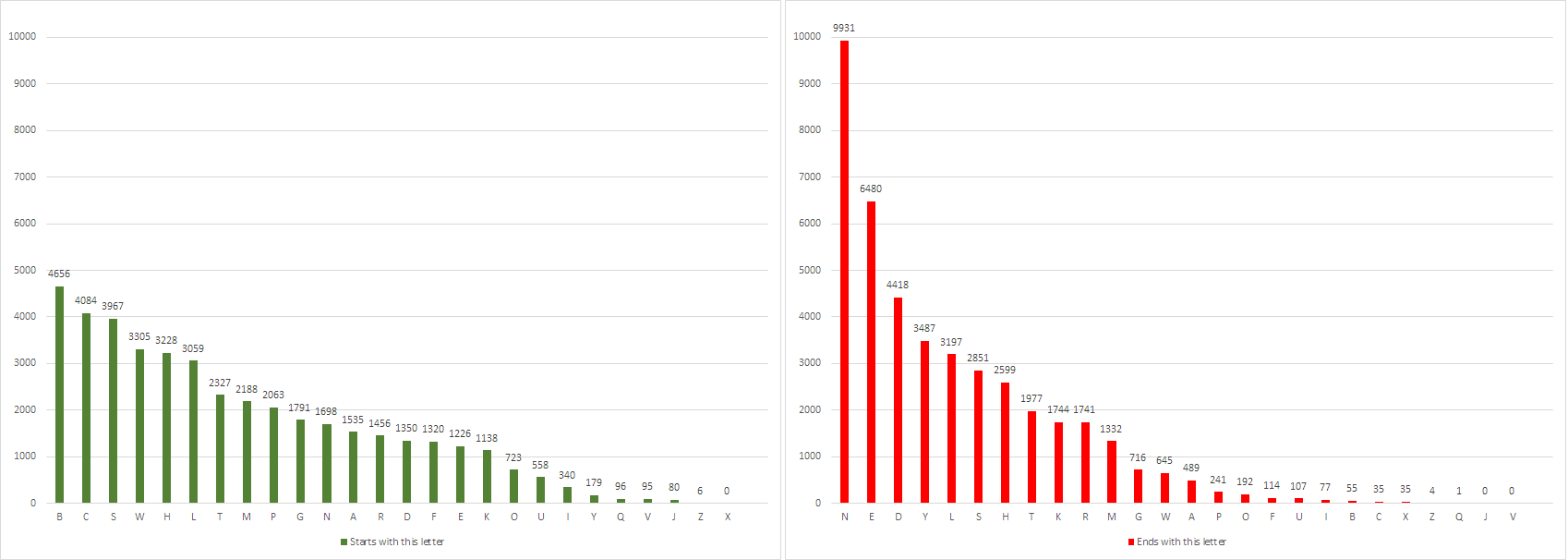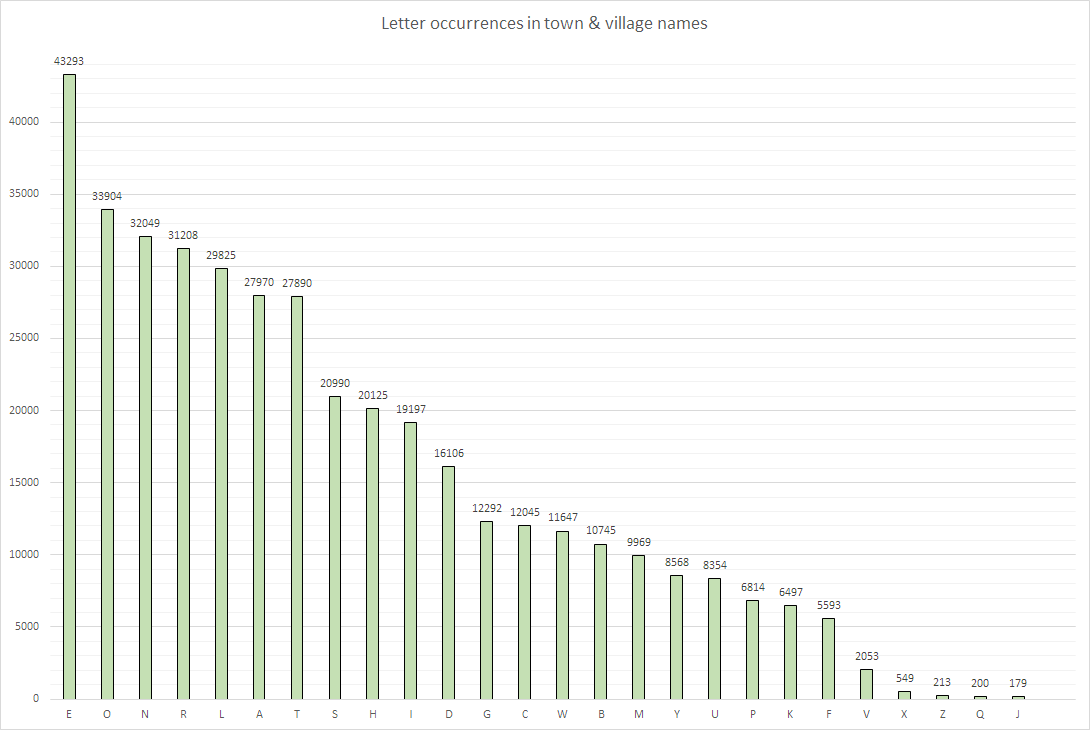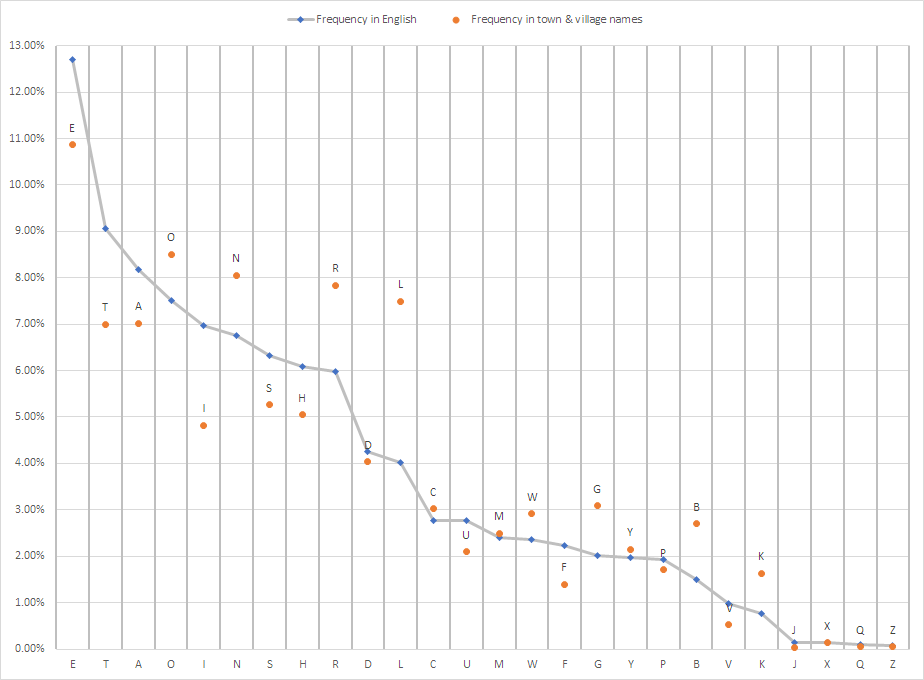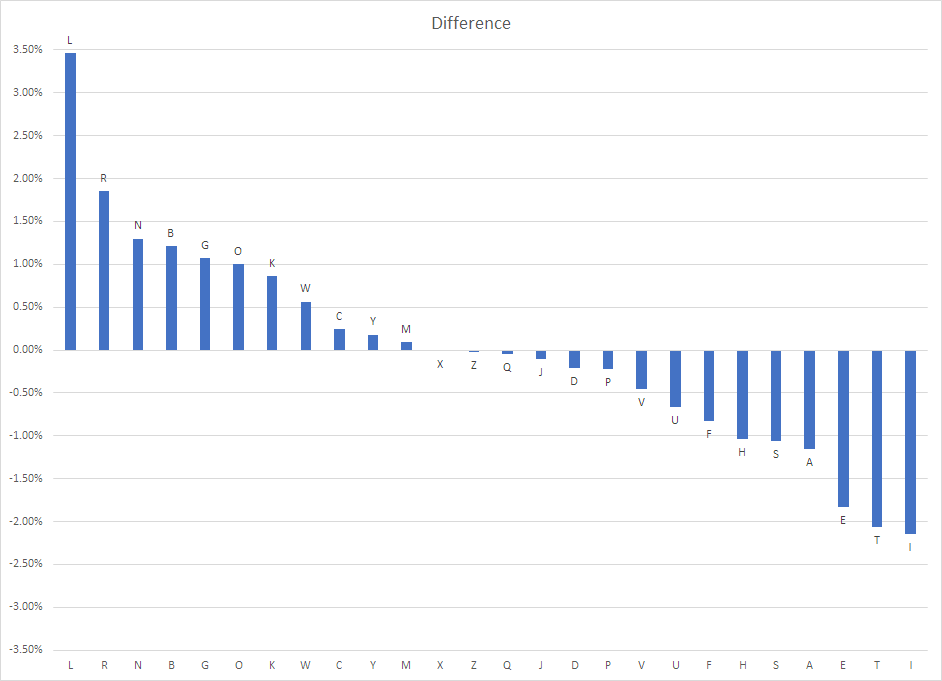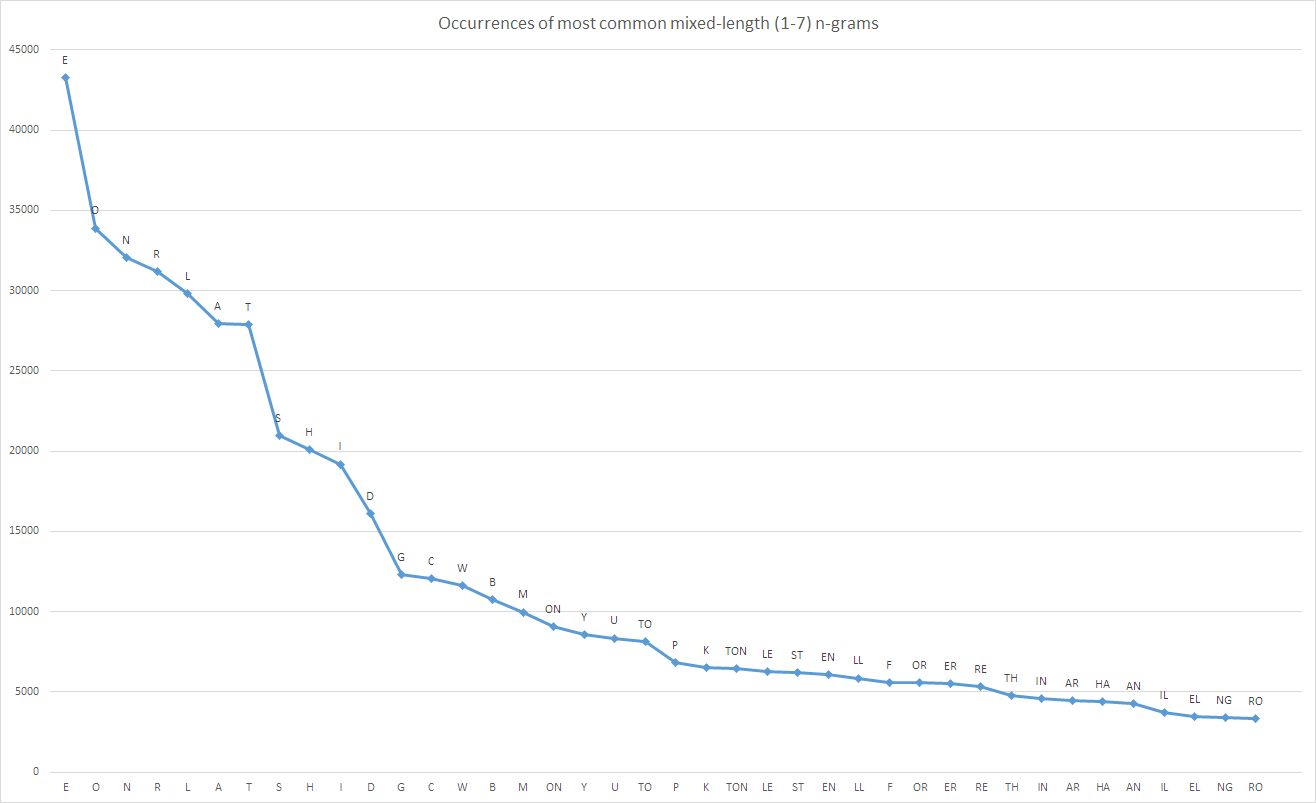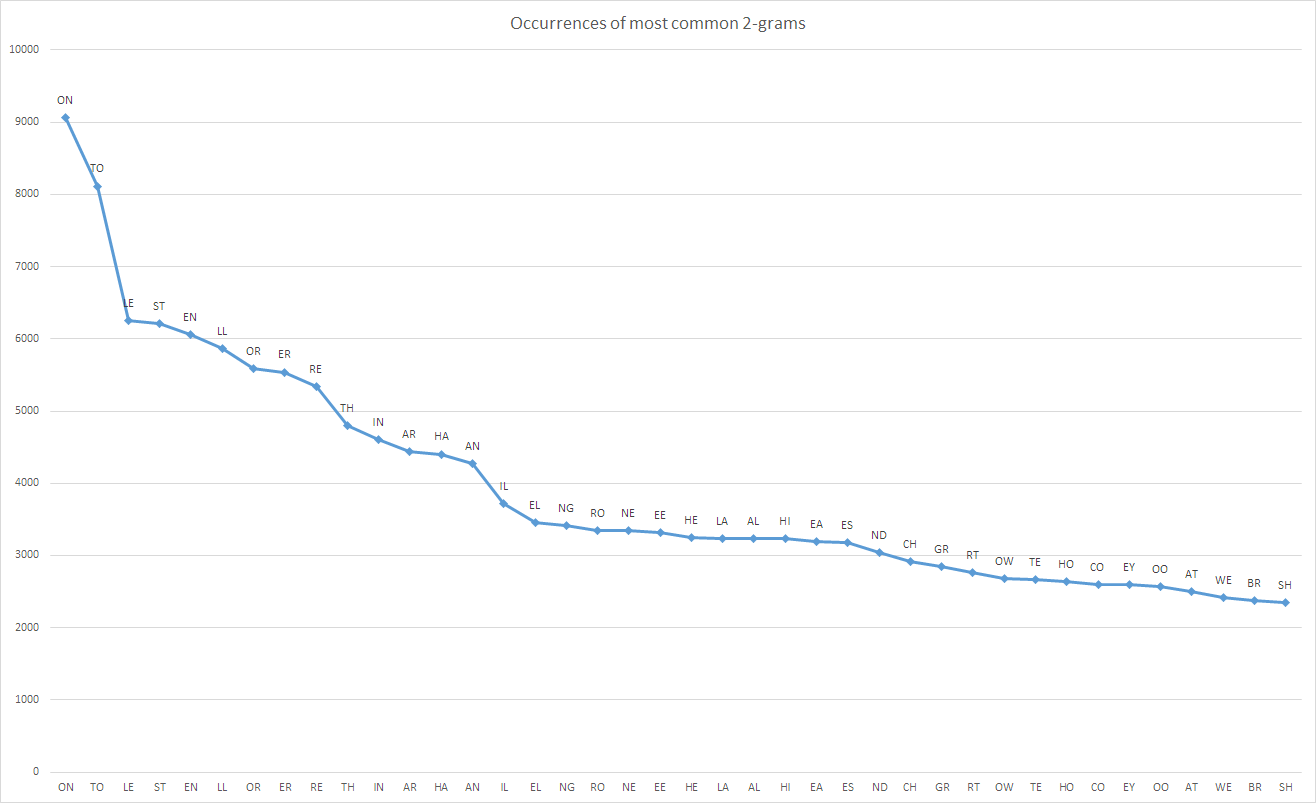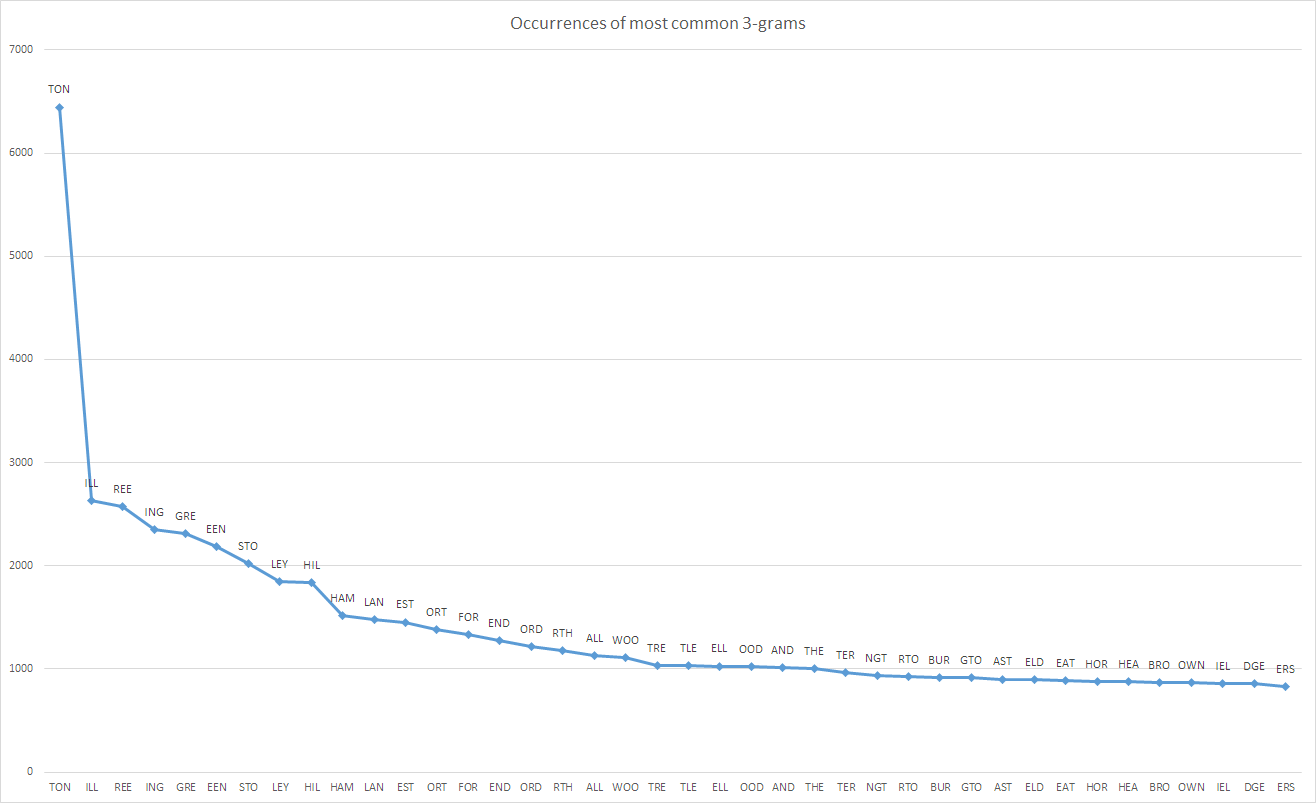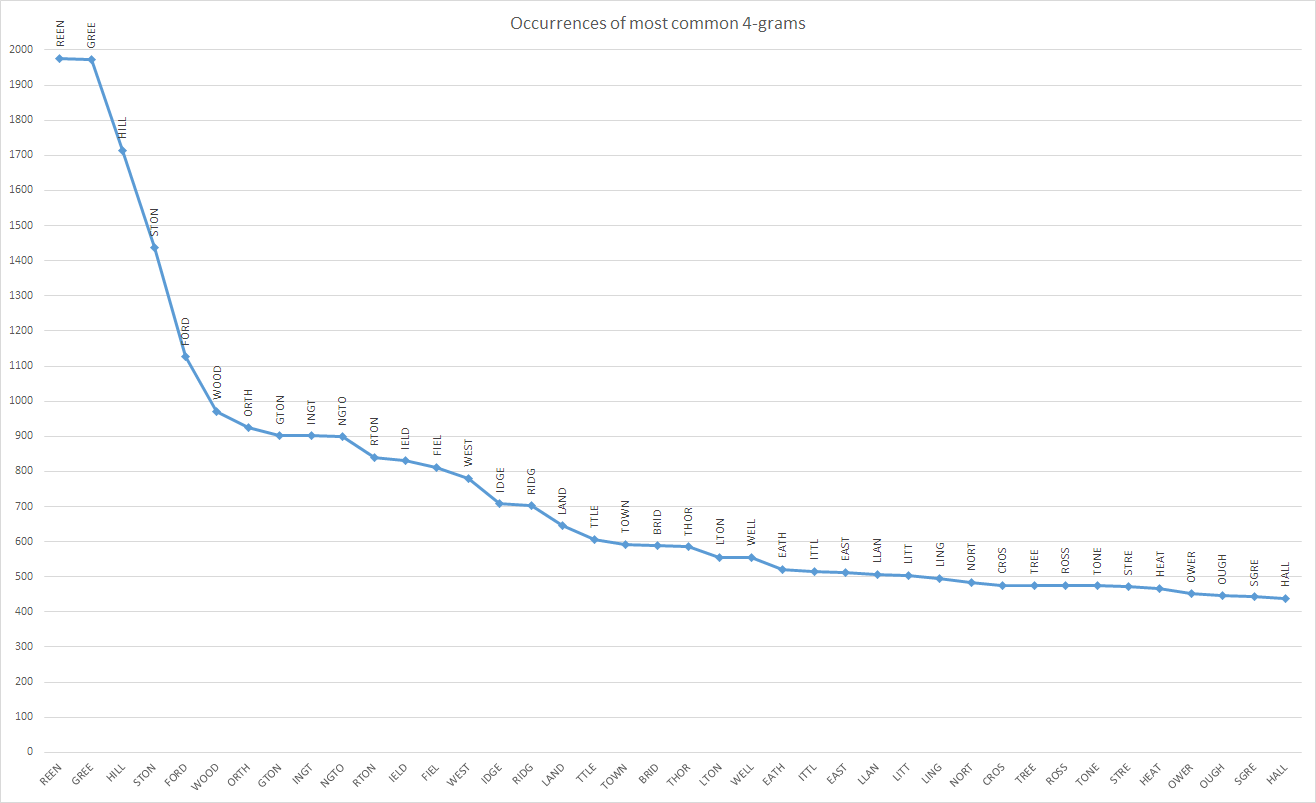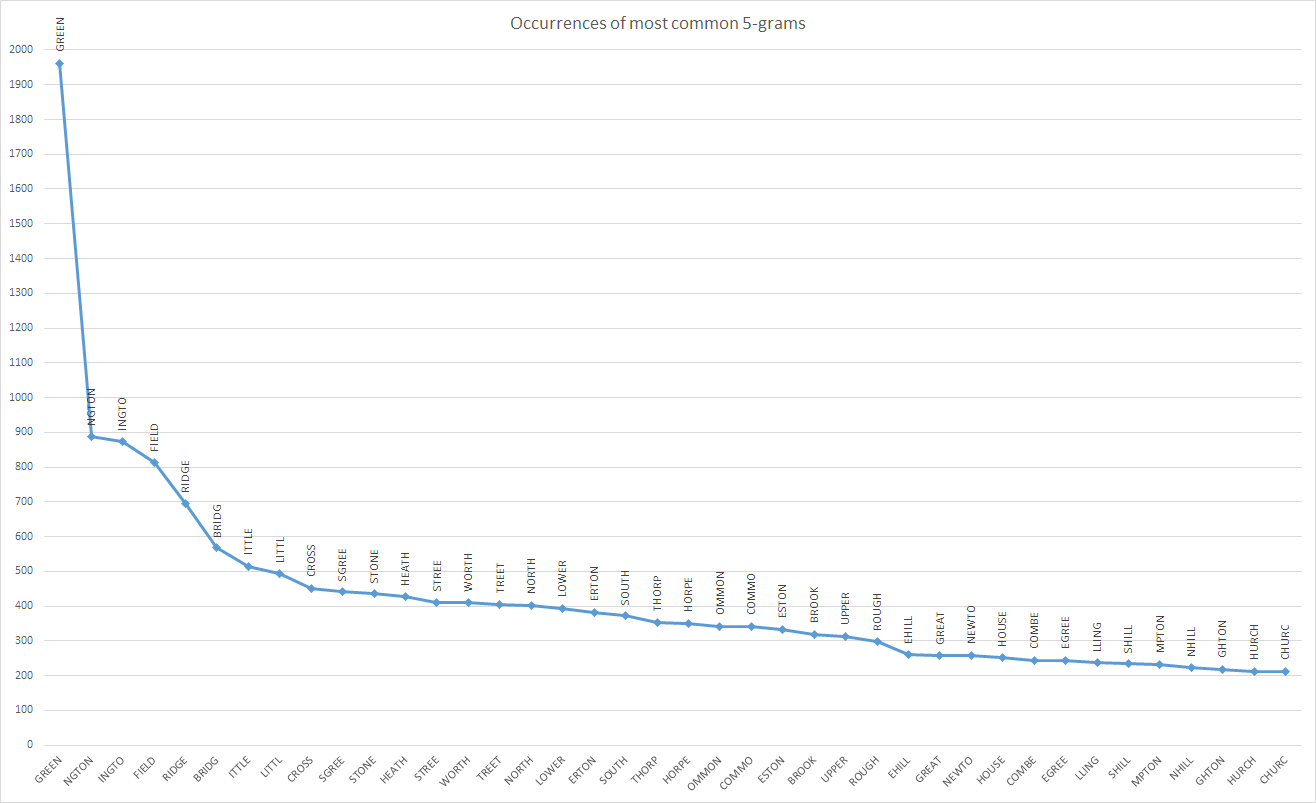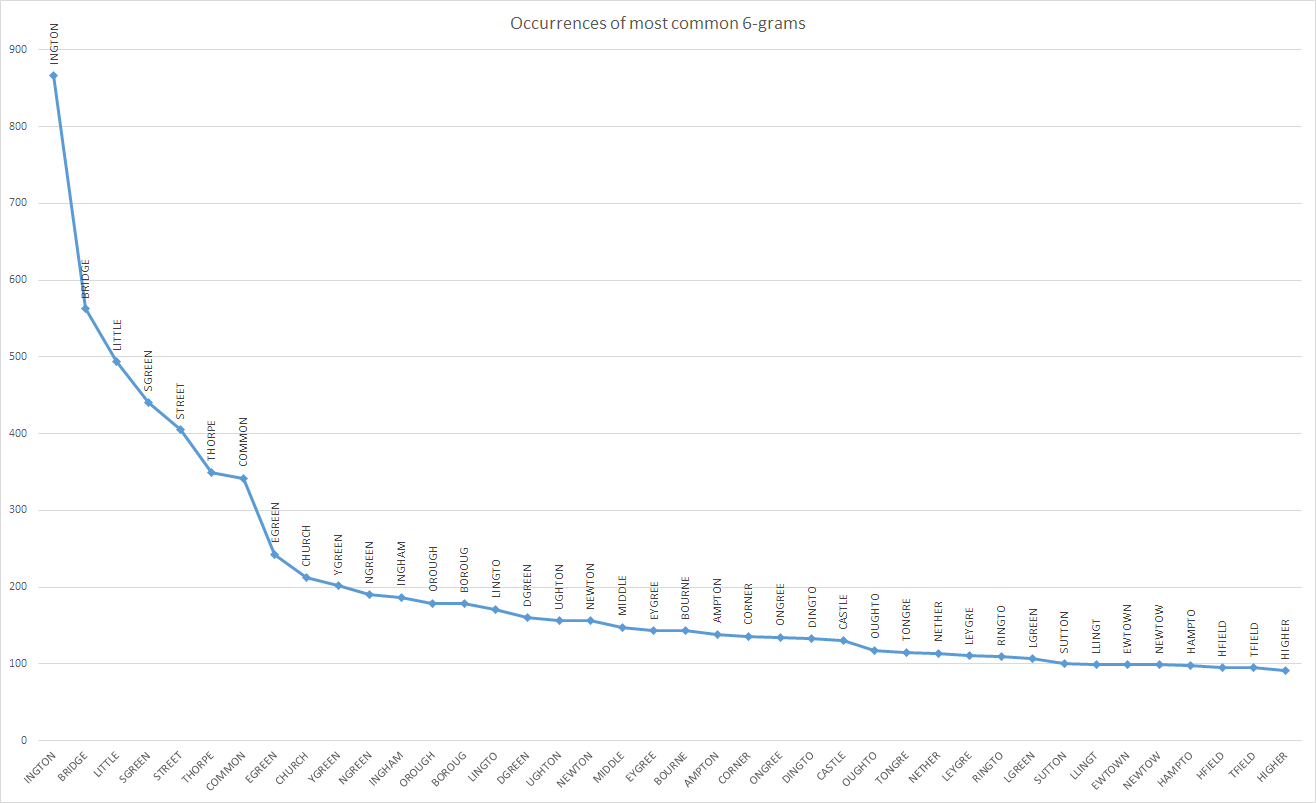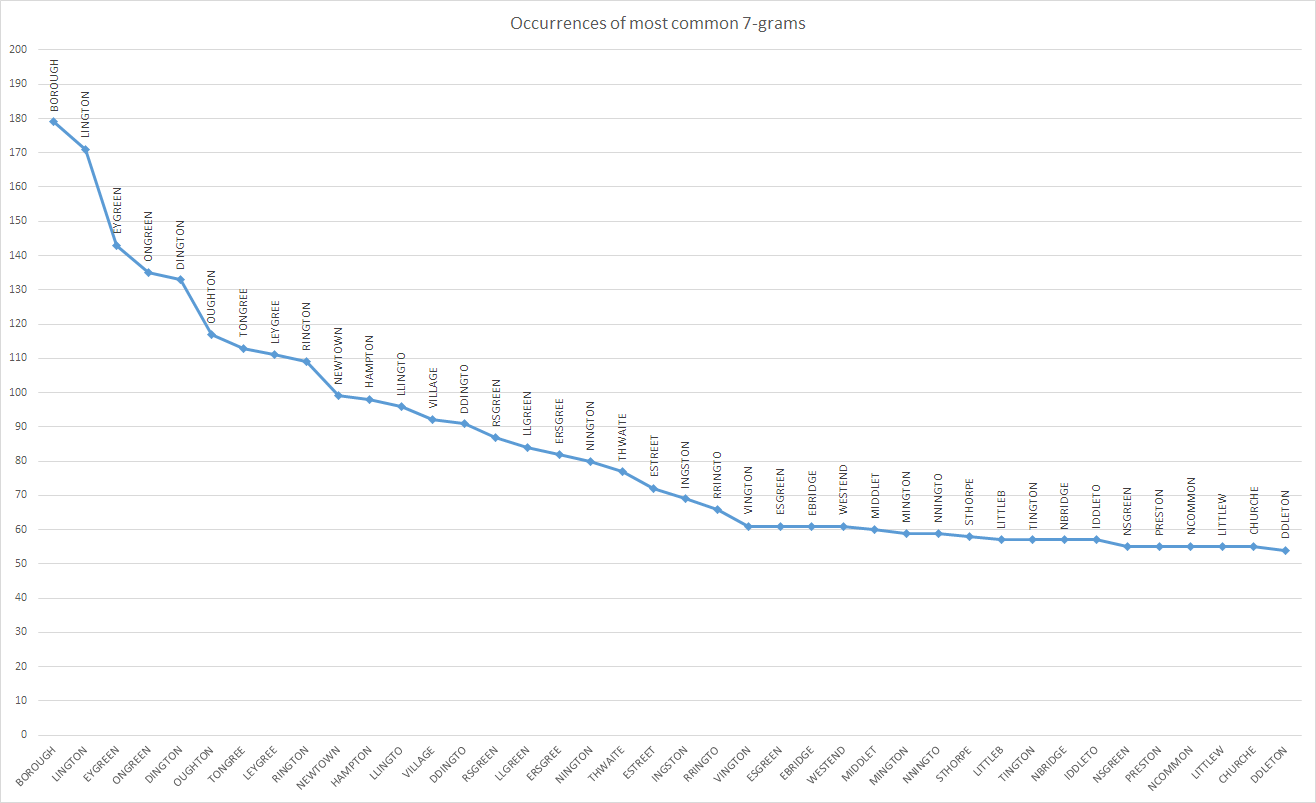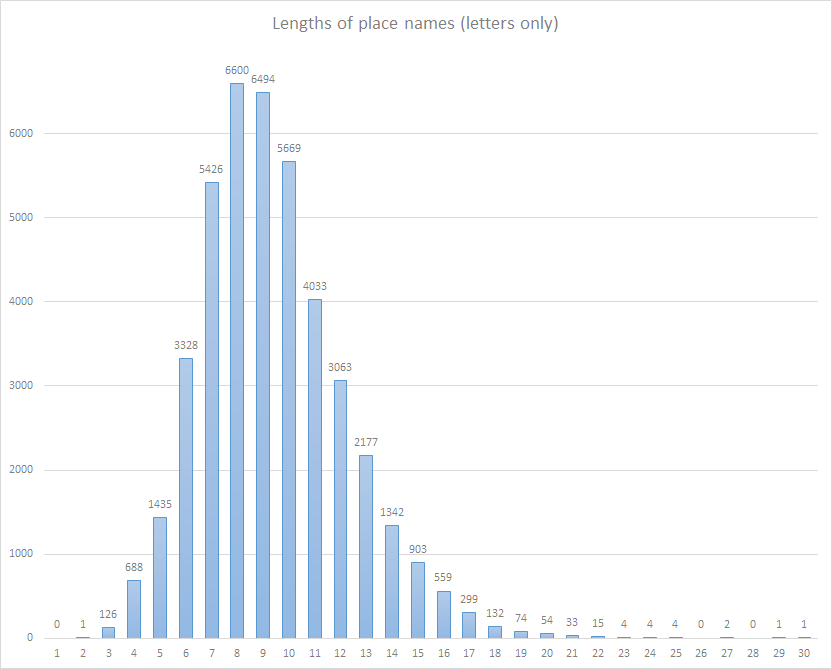- British place name component maps
- Most common dictionary words in British place names
- Letter frequencies in British place names
- Most common British place name components per n-gram size
- Lengths of British place names
- Interesting links
- Data sources
- Acknowledgements
- Technologies used
The quality of these is admittedly questionable.
The etymology of the word kirk is very interesting and explains why its usage stretches south not only into England but also mainland Europe. It seems less that 'kirk' is a Scottish word and mostly that 'church' is an English word. The Old Norse influenced places may be in the more Viking-riddled areas of England.
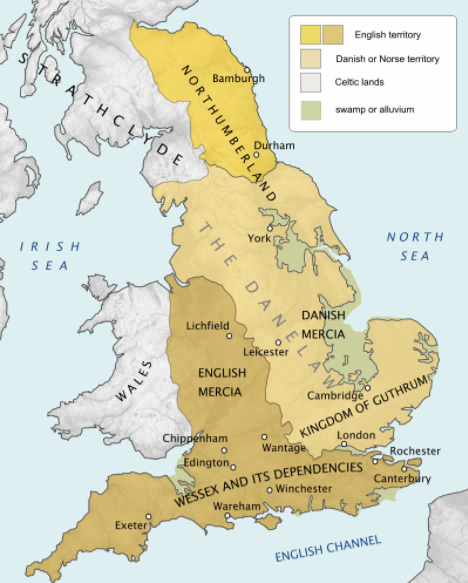 (Source: Wikipedia)
(Source: Wikipedia)
Known Danelaw place name parts include 'holm', 'thwaite', 'toft', 'thorpe' and places ending 'by'.
Few surprises here: a well-defined line is drawn around parts of the coast with place names mentioning the sea.
"Aber", "Mouth", and "Inver" all refer to river mouths. Interesting to note that "Aber" is shared between Scotland and Wales, while "Inver" is exclusively Scottish.
Interesting that "worth" is well spread over England but does not venture into Scotland or Wales - but makes more sense when you find that its origin is Old English.
'Cester' seems like a southern variation, and 'caster' a northern variation. Uses of 'chester' itself reach up into Northumbria.
I have kept the version from the older dataset as the difference is much more apparent.
Weald is Old/Middle English for "wood".
Note: this list was heavily curated for the following reasons:
- The source dictionary list contains unhelpful (in this case) pieces like 'E', 'LL', 'ENL' which are mostly noise
- Single and double letter variations (e.g. 'A', 'EN') are mostly noise
- Some longer dictionary words like 'UGH' and 'EST' still don't really belong
However the raw, uncurated analysis data can be found here.
Notes:
- Spaces and dashes were removed in the names before creating n-grams.
- The Y axis is on different scales in each graph.
- Mapping Vikings through British Isles Placenames - James Curley
- Atlas of Hillforts of Britain and Ireland
- The History of the British Isles: Every Year - Ollie Bye - YouTube
- Britain & Ireland drawn from pubs - Ramiro Gómez
- Toponymy in the United Kingdom and Ireland - Wikipedia
- Toponymy of England - Languages - Wikipedia
- List of generic forms in place names in the United Kingdom and Ireland - Wikipedia
- Old Norse and Norn names in Shetland - Edinburgh Geological Society
- Glossary of Scandinavian origins of place names in Britain - Ordnance Survey
- Talk of the town: The etymology of UK places - The Independent
- List of United Kingdom county name etymologies - Wikipedia
- The Zipf Mystery - Vsauce - YouTube
- Earlier Britain graphs created using the data from Mike Simpson's Genealogy Site.
- More recent Britain graphs, and graphs for other countries, come from the data at GeoNames.
The data from Mike Simpson's site was filtered for 6-digit Ordnance Survey codes which were mostly towns and villages but did have some noise. The data included Britain and the Isle of Man. It was missing some villages I looked for such as Carsethorn and Colvend.
The GeoNames UK data includes Britain and Northern Island. It also appears to have some data from other time zones (territories?) so I filtered any timezone not Europe/London. Isle of Man data was combined in from a separate GeoNames data file. The GeoNames data appears to have less omissions and less noise. However, I have noticed some flaws. I have filtered this data by feature class "P" - populated places mostly cities, towns and villages, but with some noise remaining.
Between the two data sources the maps are more or less similar, with as a general rule less positions appearing for the GeoNames data, but in the same areas and clusters.
- GeoNames- The GeoNames geographical database covers all countries and contains over eleven million placenames that are available for download free of charge.
- UK Towns & Villages - Mike Simpson's Genealogy Site
- dwyl - english-words - 479k English wordlist
- clipboardy - copy/paste library for Node.js
- Matplotlib and pandas
- CSV to Markdown Table Generator - Donat Studios
- List of generic forms in place names in the United Kingdom and Ireland - Wikipedia
- Sindre Sorhus on Stack Overflow - Copy to clipboard in Node.js?
- Ore4444 on Stack Overflow - Is there a way to automatically build the package.json file for Node.js projects
- Code in Python and JavaScript (Node.js)
- Third-party libraries (Python): Matplotlib, pandas
- Third-party libraries (JS): clipboardy
- Graphs made using Microsoft Excel or Matplotlib
